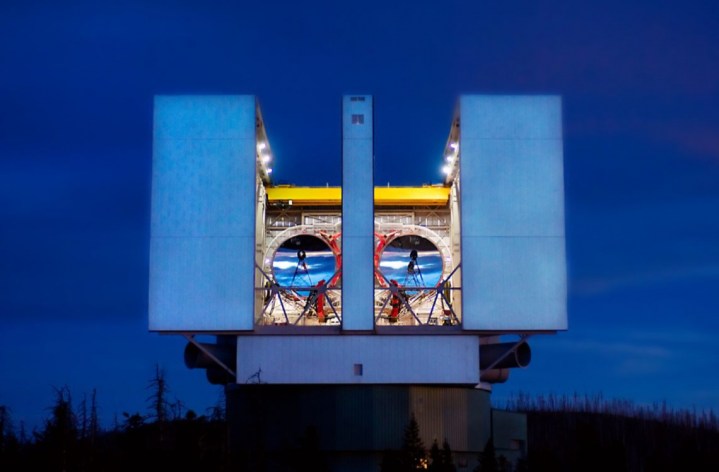When you imagine a galaxy like our Milky Way, you’re probably picturing a swirl shape with arms reaching out from a central point. These spiral arms are a classic feature of many galaxies. Similar structures can be found around young stars which are surrounded by disks of matter from which planets form, called protoplanetary disks. Now, astronomers have discovered evidence that these structures could be created by recently formed exoplanets.
Astronomers used Large Binocular Telescope in Arizona to investigate a giant exoplanet named MWC 758c which seems to be forming the spiral arms around its host star. Located 500 light-years away, the star is just a few million years old, making it a baby in cosmic terms. “Our study puts forward a solid piece of evidence that these spiral arms are caused by giant planets,” said lead researcher Kevin Wagner of the University of Arizona in a statement. “And with the new James Webb Space Telescope, we will be able to further test and support this idea by searching for more planets like MWC 758c.”

The star still has its protoplanetary disk of dust and gas around it, making it comparable to the early stages of our own solar system. “I think of this system as an analogy for how our own solar system would have appeared less than 1% into its lifetime,” Wagner said. “Jupiter, being a giant planet, also likely interacted with and gravitationally sculpted our own disk billions of years ago, which eventually led to the formation of Earth.”
The spiral arms are formed in the protoplanetary disk by the gravity of large planets, as they attract nearby material to them. Astronomers had predicted this phenomenon but had not seen it in action until now, and by studying it they can learn about the formation of planetary systems.
“Spiral arms can provide feedback on the planet formation process itself,” Wagner said. “Our observation of this new planet further supports the idea that giant planets form early on, accreting mass from their birth environment, and then gravitationally alter the subsequent environment for other, smaller planets to form.”
The researchers plan to use the James Webb Space Telescope (JWST) to make further observations of the system, and particularly to learn why the giant planet is much redder than expected.
“Depending on the results that come from the JWST observations, we can begin to apply this newfound knowledge to other stellar systems,” Wagner said, “and that will allow us to make predictions about where other hidden planets might be lurking and will give us an idea as to what properties we should be looking for in order to detect them.”
The research is published in the journal Nature Astronomy.
Editors’ Recommendations
Services Marketplace – Listings, Bookings & Reviews